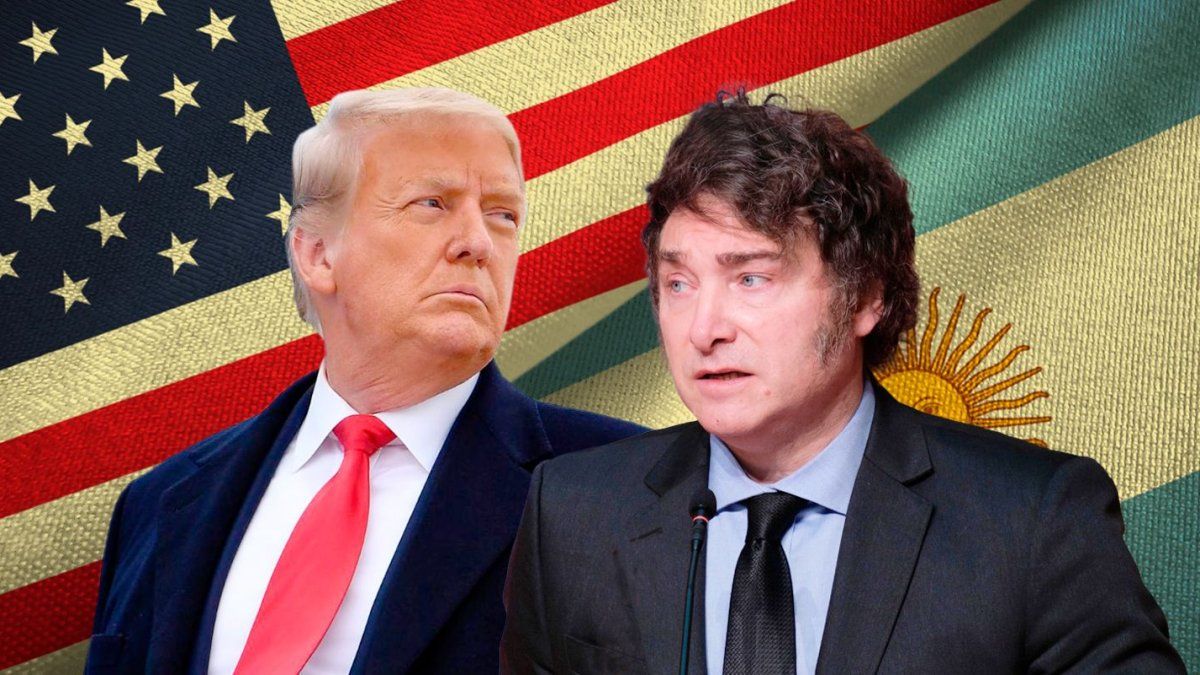“Nationalism in central economies is imperialism; in peripheral economies it is liberation,” A Latin American author said. Inverted papers? What threats to the American political economy? China? Meanwhile, the world deepens a commercial war, which began in 2018, and will not be the last assault this 2025. As if it were a parallelism of the first two decades of the twentieth century: Economies administered justified by the war in which they were submerged. Today that is expressed in sectoral protection measures and military essays in tense areas: Formosa, Middle East and the latitude of the two Koreas.
Is what Trump did new? No, alone He returned to the sources of the United States Foundation, Commerce Administration, Internal Market and Protectionism. Is it wrong? No, precisely because what Trump raised in his speech was to explain that the crisis of 1929 was because of the withdrawal of the state of the economy, not by monetary issuance, as some teachers of the periphery repeat in the classrooms. The market forces could not deal with the drop in prices and capital exit.
Post First War (1914-1919) The predominance of the thought of the neoclassical economy in universities was clear. From perfect competition to imperfect. This general theory modifies the measures of war times giving way to the non -intervention of the State in the economy. Result: Crisis of 1929. These measures could not fall with the fall in agricultural prices or with the capital movements that modified interest rates to avoid exits. Trump continues to contradict all the manuals of the liberal-conservatives in Argentina, more or less liberal libertarian, it has in common prefer a white house than a pink. Ironic.
The World War tariff deepened when the economic team supposed that the worst had already happened. According to vector, which the economist Haroldo Montagu leads, there was a “fall of the Merval, rise from the parallels and the country risk exceeded 900 points. The net purchases of the BCRA lasted only one day and then the green bleeding continued. With the agreement with the IMF in see, the solvency of the BCRA is void and the liquidity problems worse.” Parenthesis has a liquidity problem in Argentina? No.
Continuing with the report, Contrary to the official discourse, even with the loan, the enlarged monetary base would not be covered, that is, more pesos than dollars.
The United States aims to recover economic autonomy based on industrial, scientific and technological development – initiated by Biden and its investment of 21,000 MDD in CyT – to reduce dependence on their value chains globally. Rebuild this, first increasing rates and second repatriating capitalsif the American capitals do not return will face tax increases but will they leave the predominance in other peripheral economic to return to the US in reconstruction? Here the main contradiction is placed on who is consolidated in the European market: China or USA?
And the secondary contradiction is How to sustain the predominance played in other economies such as Asia -Without China, Japan and Korea-, Africa and Latin America that continue with an agricultural and energy export model.
Meanwhile, the US does not need to intervene directly in these peripheral spaces. Has the Mochon and Becker who has been forming economists to Do not discuss even an import industrialization in the 21st century. Not even thinking a science and technique from the periphery. On the other end of the Chinese world, Japan and Korea forge an alliance, leaving aside historical differences and coordinating their technological advances. Is another economic bloc emerges? The G3AP?
Continuing with Trump that all economy manuals are breaking, where it is established that non -intervention of the State and the administration of scarce resources is the way to development, for example, for example, Here we can quantify how rates will impact on Argentina (See table). UU. Tariffs increased by 10%. In “Food” almost tied the tariff that Argentina put, in the “animals and derivative” website we have 2.5% while the US tariff passed to 15% and in plant products the same thing happened. This increase in all tariffs consolidates protectionism while we do not respond as China. Finally, in chemist and industrial protection surpasses the Argentine tariff.
Impact Argentina.jpg
The national economy continues with collections, according to the vector report “the tax collection of March grew almost 7% in real terms with respect to last year and crown five consecutive months of increases. However, when making zoom in the data, the increase is explained mainly in the poor base of comparison of March 2024 (the month with the worst collection of that year). Even with that thrust, and with the exception (134% in real terms), The collection of March is among the worst for that month in the last decade”
On the side of the International economy forward If we could make a prediction: a Fed rate that will be maintained without modifications forward is proposed. If an increase occurs, this would complicate the situation of indebted countries. But it would also influence the fall in agricultural prices, which are now down, mainly in soy flour. Situation that complicates the income of countries that depend on good harvests. As much as you have record production, if the price is low, the income will be less than expected. If this drop in foreign exchange occurs and taking into account that in 2024 the Blend dollar took about 6,000 million dollars, will this dollar follow? Because during this 2025 obligations must be covered or depending absolutely on what is decided in the IMF
Source: Ambito
David William is a talented author who has made a name for himself in the world of writing. He is a professional author who writes on a wide range of topics, from general interest to opinion news. David is currently working as a writer at 24 hours worlds where he brings his unique perspective and in-depth research to his articles, making them both informative and engaging.




